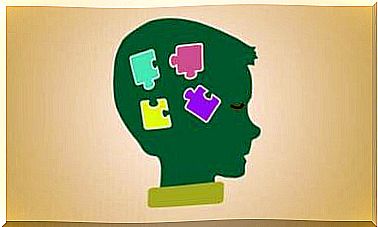Treat Pure Obsessions

Obsessive Compulsive Disorder is a diagnostic category reserved for those cases in which the patient exhibits obsessions and compulsions. In some less common cases, it has only obsessions, known as pure OCD, or pure obsessions. How to deal with pure obsessions?
Obsessions can be defined as recurrent and persistent thoughts, impulses or images that are experienced, in the context of the disorder, as intrusive or unwanted and that in most people cause significant anxiety or distress.
Compulsions usually provide very short-term relief. The anxiety or tension caused by obsessions is negatively reinforced by the compulsive behavior.
Consequently, they keep the problem and make it chronic, because the patient learns that it is the only means at his disposal to get rid of the anxiety and unpleasant thoughts that populate his mind.
Compulsions are generally not realistically linked to the feared fact or are clearly excessive. For example, the individual may believe that if he slaps his hands three times when leaving and entering the front door, the husband will not have a car accident on his way to work.
The cases in which patients who do not show this symptomatology, or do not resort to compulsions to calm their discomfort, are more complex. Treatment for pure obsessions is more difficult, but several psychological techniques are now available.

Habit is the secret to dealing with obsessions as well
The fact that obsessions are strengthened in a negative way by the association with compulsions leads to the non-habit of anxiety or fear that they generate.
The obsessions are thus nourished and, by feeding them progressively, they grow. Similarly, the treatment of pure obsessive disorders is based on habit, and for this to happen it is essential to expose yourself to your obsessions.
Patients are often refractory to exposure. Exposure with response prevention can lead to significant denial and even abandonment of treatment. Definitely a disadvantage.
However, empirical evidence to date shows that it is the most successful therapy among patients who complete it.
Finally, the aim is that the person exposes himself to his thoughts or images in such a way that, voluntarily, he has to pull them out and “look them in the eye”. Habit training stems from the research of Salkowski and Westbrock.
It is usually performed using an audio cassette, in which the patient records his own pure obsessions and listens to them repeatedly until he gets used to it. The predictability of the stimuli to which the subject is exposed is the key factor in the treatment. Through recording, the patient can predict what he will feel, contrary to what happens with pure obsessions, which are unpredictable.
In addition to audio recording, other strategies can be used to present thoughts in a predictable way: deliberately evoke them by narrating them in the session or putting them in writing and rereading them until the anxiety subsides.
It is necessary to explain to the patient in detail how anxiety works and how the habit follows a curve where it first increases, but then begins to decrease. Psychoeducation facilitates adherence and therapy success to treat pure obsessions.

The anxiety curve
The characteristic anxiety curve has the shape of an “inverted U”. As we have already noted, when a person is exposed to their fears (either through pictures, live or, in the case of pure OCD, by recording or writing them) they experience a substantial increase in anxiety.
This moment is crucial because the patient thinks he is worse off and that he is right, so he feels much more anxious. But that bad climb is over. Physiologically and inevitably, the increase in anxiety has a limit.
When this discomfort reaches its peak and if the patient does not perform any rituals, safety behaviors or any other type of avoidance, the anxiety will begin to progressively diminish. How is it possible? First, on an emotional level, anxiety or any other emotion follows the same pattern. There is no known case in which the emotion escalates to the point of killing someone. Far from it.
On the other hand, the simple fact of becoming aware of the fact that our cognitions are not realistic allows us to modify them to make them more moderate. This progressively leads the anxiety to loosen its chains.
Ultimately, persistence is the key to success in dealing with pure obsessions. Brief and short exposures, in fact, can produce an iatrogenic effect whereby the patient will not only not overcome his fear, but it may even increase .









